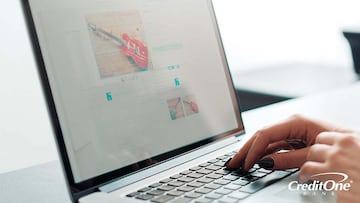How To Prevent Credit Card Fraud
December 12, 2024
Want to know how to prevent credit card fraud? Some simple strategies can set you on the right path.

Introduction
Between Hollywood and the headlines, you’d think most financial crimes involved daring heists or wild promises to investors. But the reality is more down to earth.
Credit card fraud is one of the most common types of fraud worldwide and the most reported form of identity theft in the US, according to the FTC’s Consumer Sentinel Network report.
And while protections like Zero Fraud Liability exist to prevent cardholders from being liable for fraudulent purchases, that’s only part of the story.
The cardholder has to discover and report the fraud, order card replacements, update payment information in various places and generally put in a bunch of work. That’s all in addition the emotional burden after having your privacy breached.
Luckily, by understanding how fraudsters operate and adopting some simple strategies, you can protect yourself against potential credit card fraud.
Types of Credit Card Fraud
Credit card fraud is a category of identity theft where stolen personal or account information is used for unauthorized credit card accounts or purchases.
Credit card fraud can work in a few different ways:
Skimming
A skimmer is a tiny device that can be secretly installed in the card reader on an ATM, gas pump or another point of sale, allowing a thief to steal credit card details when the card is inserted. The thief can then clone that information onto a blank card or use it to make online purchases.
Credit card application fraud
This is when a thief opens a new credit card account using a stolen identity. This form of fraud can almost immediately impact the victim’s credit score, since new account applications result in a hard inquiry. And that’s before the thief accrues any balances, which, if not caught in time, could leave the victim liable for the debt and severely impact their future credit prospects.
Phishing and smishing scams
Phishing (via email, or smishing via text) is when scammers try to trick victims into revealing personal information by posing as a trusted party, like a popular store or bank, that allegedly needs that information.
Credit account takeovers
An account takeover happens when the scammer contacts a bank and uses stolen personal information to mimic the victim. Once the scammer has account access, they may change login credentials and even have a new card delivered to their home address.
Lost credit cards
This one’s an oldie, but it’s definitely not a goodie. When a card is lost, left behind or stolen, its security has been compromised and it should be replaced.
Credit Card Fraud Prevention
Understanding the different forms of credit card fraud is a good foundation for protecting yourself. But you should build further on that foundation if you really want to prevent credit card fraud.
Monitor your accounts regularly
One of the most effective ways to protect yourself from credit card fraud is also one of the simplest. Check your accounts for activity you don’t recognize.
Make it part of your routine once or twice a week and you’ll find that it doesn’t even take that long to make sure everything’s A-OK.
Use strong, unique passwords
You should secure your accounts with strong passwords consisting of letters, numbers and special characters. It’s also best to use a unique password for every account. That way, if one account’s password is compromised, a thief can’t log into any other accounts using the same password.
Memorizing all of life’s passwords can be tough, but password managers, like those built into most modern browsers and smartphones, can help you generate and store good passwords.
Be cautious of phishing and smishing scams
If you receive a message that claims to be from your bank, a store or another official source, and there’s an urgent request for payment or personal information, it may be a phishing scam.
Do not follow any links in the message and contact the actual party directly, using a number or URL you know is real.
Avoid using unsecured websites
Make sure the URL for any website you visit begins with “https,” which indicates a secure, encrypted connection. Web browsers will usually show a padlock or similar logo in the address bar to confirm a secure connection.
If the site starts with “http” instead, the connection isn’t encrypted and any data transmitted is at risk of being exposed.
Don't overshare on social media
It’s fun to connect with friends and family on social media, but be wary of sharing details that could be useful to identity thieves, like your address, your birth date and more. Consider using privacy settings to only share with trusted people.
Limit card information saved online
Personal information can’t be stolen or misused if it isn’t stored in the first place.
It might be less convenient to enter your card information every time you shop, but it greatly protects you from data breaches or unauthorized purchases if the store account is compromised.
If you’re looking for a happy medium, some password managers can store credit card information on your device with encryption, offering both convenience and security.
Use mobile payment apps (when secure)
Mobile wallets (like Apple Wallet, Google Wallet and Samsung Wallet) use tokenization technology to let you pay in person or online without exposing your actual credit card account number. Even if that information falls into the wrong hands, it was only valid for that specific transaction.
Avoid public Wi-Fi for financial transactions
Public Wi-Fi networks are often unencrypted. Wait until you’re on a trusted, secure network if you need to do anything that involves entering financial details.
Set up fraud alerts or credit freezes if necessary
Many cards offer features that notify you of potentially fraudulent activity via text message or app notifications. Sign up for these account alerts so you can catch suspicious transactions before they go through.
Use different cards for AutoPay and everyday spending
Use one card for daily purchases and another only for essential bills on AutoPay, keeping the latter in a safe place at home. This way, you protect your “bills” card from being lost or stolen while you’re out and about.
Review credit reports regularly
As with monitoring your credit card accounts, checking your credit report for accounts you don’t recognize is a good way to stay on top of potential fraud.
By law, you’re entitled to a free credit report every year from each of the credit reporting bureaus. But now, you can access them every week at AnnualCreditReport.com.
Bottom Line
Credit card fraud is a huge, global issue that can occur in many ways, but that doesn’t mean you’re helpless against it.
By recognizing telltale signs and implementing a few strategies, you can guard yourself from credit card fraud. Just be smart about how and where you use your card and personal information.
If you’re looking for a new credit card with Zero Fraud Liability and free monthly credit score access, see if you pre-qualify for a card from Credit One Bank.
Jorge Labrador is a writer and editor who once realized he was having too much fun getting his budget spreadsheet right (emojis may have been involved). In his nearly two decades in journalism and advertising, he’s written about personal finance, healthcare, travel, entertainment and more, for audiences ranging from seasoned experts to absolute newcomers.



